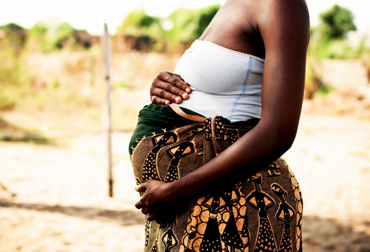
Established at the Millennium Summit of the United Nations in 2000, the Millennium Development Goals (MDG) are eight international development goals that member states and international organizations have committed to help achieve by the year 2015. With the 2013 Millennium Campus Conference being held at Northeastern University eight day from today, let us refresh ourselves on the current status of these eight goals, one day at a time.
According to the 2013 MDG Report, the goal of improving maternal health requires the maternal mortality ratio to be reduced by three quarters. Although the rates have been declining by nearly half since 1990, the speed of reduction is not fast enough and may not reach the target by 2015. Over the past 20 years, the maternal mortality ratio around the world has declined by over 45 percent, from 400 maternal deaths per 100,000 live births down to 210 in 2010.[1] In order to reach the target ratio by 2015, the UNDP hopes to improve access to gynecology/obstetric care, make dozens of health personnel present during labor and finally, supply “antiretroviral therapy to all pregnant women” who need it.

The UNDP revealed in their 2013 publication that over 50 million babies are delivered without skilled care from a doctor, nurse or midwife, which increases the chances of disability or even death. In 2011, the number of deliveries performed by trained personnel rose to 66 percent, compared to only 55 percent in 1990; despite these numbers, 46 million of 135 million live births in 2011 were delivered with inadequate care. The report also discusses the regional patterns of delivery with deliveries in the Caucasus and Central and Eastern Asia being performed by professionals 97 to 100 percent of the time, and Southern Asia and sub-Saharan Africa only 50 percent of the time, resulting in high maternal mortality rates. In order to lessen the number of maternal and child deaths, UNDP efforts are directed at achieving the World Health Organization’s recommended “four antenatal care visits” in order to ensure proper care for mothers and their children; these visits include a wide variety of screenings from infections to HIV, as well as vaccinations for bacterial diseases such as tetanus. Currently, millions of pregnant women in developing nations do not receive the recommended four antenatal visits, with only 36 percent of pregnant women in Southern Asia and 49 percent in sub-Saharan Africa receiving sufficient antenatal care. The UNDP report also notes the importance of not only the frequency of medical visits but also the quality of care that women are receiving, which cannot be reflected in the data.

In addition to accessible healthcare, the UNDP claims that proper education, family planning and an abundant supply of contraceptives will help meet the target of achieving quality global maternal care. However, the use of contraceptives does not seem to be too much of a concern as the report reveals that 9 in 10 women who are married or in sexually active relationships are using contraceptives, with the most common form being female sterilization and IUD. In Africa, huge disparities continue to exist, where countries with low maternal mortality rates have high levels of contraceptive use, while countries such as those in sub-Saharan Africa have high mortality rates, with only 25 percent using contraceptives. Data collected in 1990, 2000 and 2011 showed that more and more women are getting access to family planning assistance, but the demand is increasing at a fast rate, with more than 140 million women remaining without contraception. This number will grow to at least 900 million by 2015, making the demand for contraceptives, education and family planning services an important agenda in order to successfully improve maternal health worldwide.
In Hyderabad, India, LifeSpring Hospitals–a chain of hospitals for low-income patients–has declared to provide 82,000 families with proper health services, increasing the number of hospitals that provide care for women and children. LifeSpring is the first chain of healthcare providers to join the Business Call to Action (BCtA), a platform for companies worldwide to support and provide resources in achieving the Millennium Development Goals. More than 100,000 women in India die from pregnancy-related deaths each year[2], and many of these incidents can be prevented through access and quality care, but that care often comes with price tags too high for poorer families. Each LifeSpring Hospital can accommodate 20-25 beds and provide low-income mothers with healthcare, delivery services and pediatric care at up to 50 percent of market rates[3].
With poverty limiting mothers all over the world, and the lack of access to quality care affecting not only mothers and their children, but their families as well, initiatives such as the BCtA are examples of ways for businesses to get involved in achieving global progress with the support of the government. The data provided by the UNDP has shown that although the number of women using contraceptives is increasing, the demand for family planning services is also growing, with women in sub-Saharan Africa unable to get these resources, unlike their counterparts in nations such as Egypt and Sudan. Beyond quantity, an improved overall standard and accessible care in rural regions, as well as providing these services for an affordable price, is an important way to improving maternal health. If countries followed the model of organizations like LifeSpring Hospitals, and government subsidies were provided in establishing these forms of support for maternal women, the 2015 goal is a possibility that can save hundreds of millions of women.
International Affairs ’17
United Nations Development Programme, “Millennium Development Goals: Improve Maternal Health.” http://www.undp.org/content/undp/en/home/mdgoverview/mdg_goals/mdg5/
United Nations Development Programme, “Millennium Development Goals Report 2013.” http://www.undp.org/content/dam/undp/library/MDG/english/mdg-report-2013-english.pdf.
Macharia, Sandra, “Indian hospital chain to fight maternal mortality.” United Nations Development Programme. Web. http://www.undp.org/content/undp/en/home/presscenter/pressreleases/2010/04/08/indian-hospital-chain-to-fight-maternal-mortality/.
[1] United Nations Development Programme, “Millennium Development Goals Report 2013.” http://www.undp.org/content/dam/undp/library/MDG/english/mdg-report-2013-english.pdf.
[2] [2] Macharia, Sandra, “Indian hospital chain to fight maternal mortality.” United Nations Development Programme. Web. http://www.undp.org/content/undp/en/home/presscenter/pressreleases/2010/04/08/indian-hospital-chain-to-fight-maternal-mortality/.


